The yellow earth tongue (Spathularia flavida) is small, but it really stands out because it has a yellow, spatula-shaped body. This little mushroom, just 2-5 inches in height, and looks exactly like its common name — a thin yellow tongue sticking out from the earth. Maybe this is a sign of Mother Nature’s sense of humor?
The yellow earth tongue breaks down fallen conifer needles and decomposes twigs into nutrients that trees absorb. These fairy-like mushrooms sometimes grow alone, but you’ll often find them clustered together or creating magical fairy rings among forest duff and moss. You have to look closely, because they can easily blend in with the forest duff.
- Scientific Name: Spathularia flavida
- Common Names: Yellow Earth Tongue, Yellow Fan, Fairy Fan
- Habitat: Conifer forest needle duff
- Edibility: Inedible, non-toxic
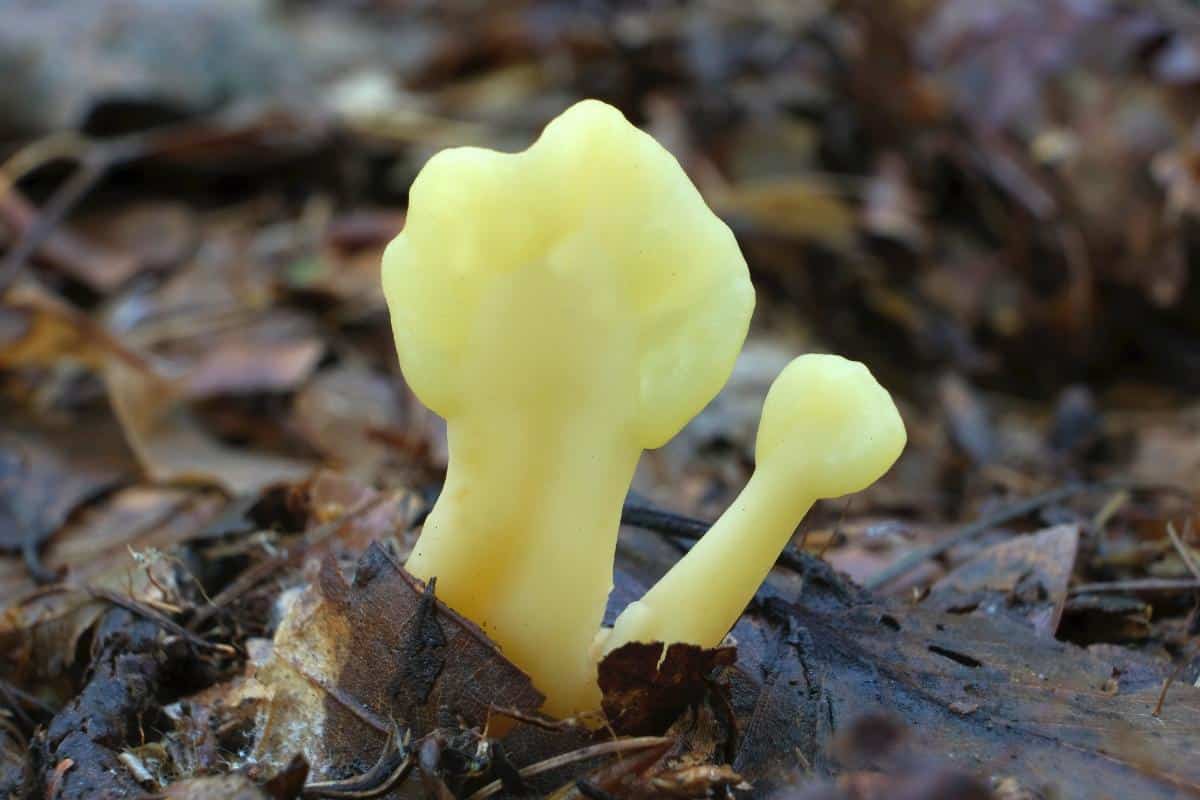
Jump to:
What is the Yellow Earth Tongue?
The yellow earth tongue is also known as the yellow fan or fairy fan because of its flattened, fan-like shape. Samuel Gray added a poetic touch by naming it the “yellowish spatula-stool” in his 1821 publication “Natural Arrangement of British Plants.”
This mushroom was first described to science in 1774 by German botanist Jacob Christian Schäffer’s. The name “flavida” comes from Latin and means “blonde” or “golden yellow” – a direct reference to the fungus’s striking color. The genus name Spathularia is also from Latin and means “broad sword.”
Spathularia flavida looks like a tongue emerging from the earth with its spatula-shaped fruiting body. The flattened cap grows like an arrowhead. Anyone who sees this fungus in nature quickly understands why it looks like a small tongue or fan pushing through the soil.
In Slovakia, Spathularia flavida is a protected species.
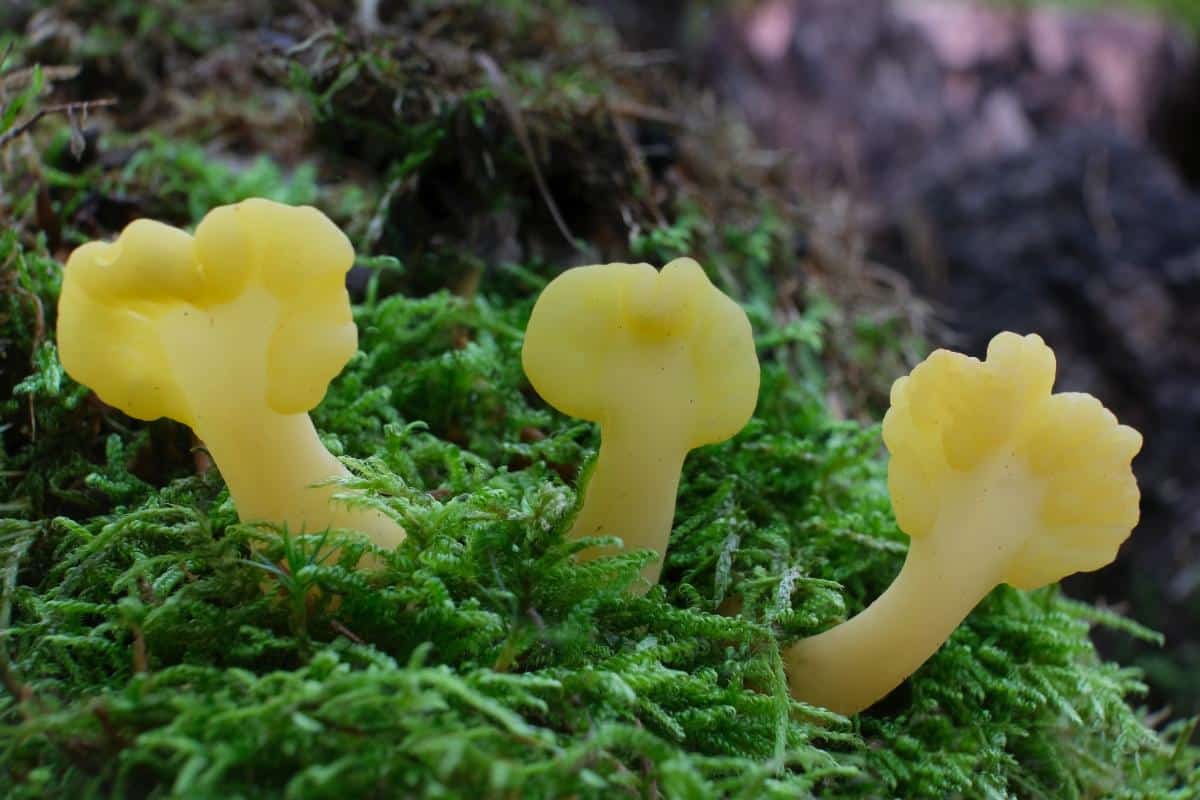
Yellow Earth Tongue Identification Guide
Season
Yellow earth tongues fruit in summer and autumn.
Habitat
The yellow earth tongue is found in the northern, montane regions of North America. It grows mostly in coniferous forests. The fungi feed on fallen conifer needles and decomposing twigs and are usually found in needle duff. However, sometimes they are found growing among mosses, and sometimes they will even grow on rotten wood.
Yellow earth tongues may grow individually or in small or large troops across the forest floor. They have been known to form fairy rings and also grow in very dense groupings.
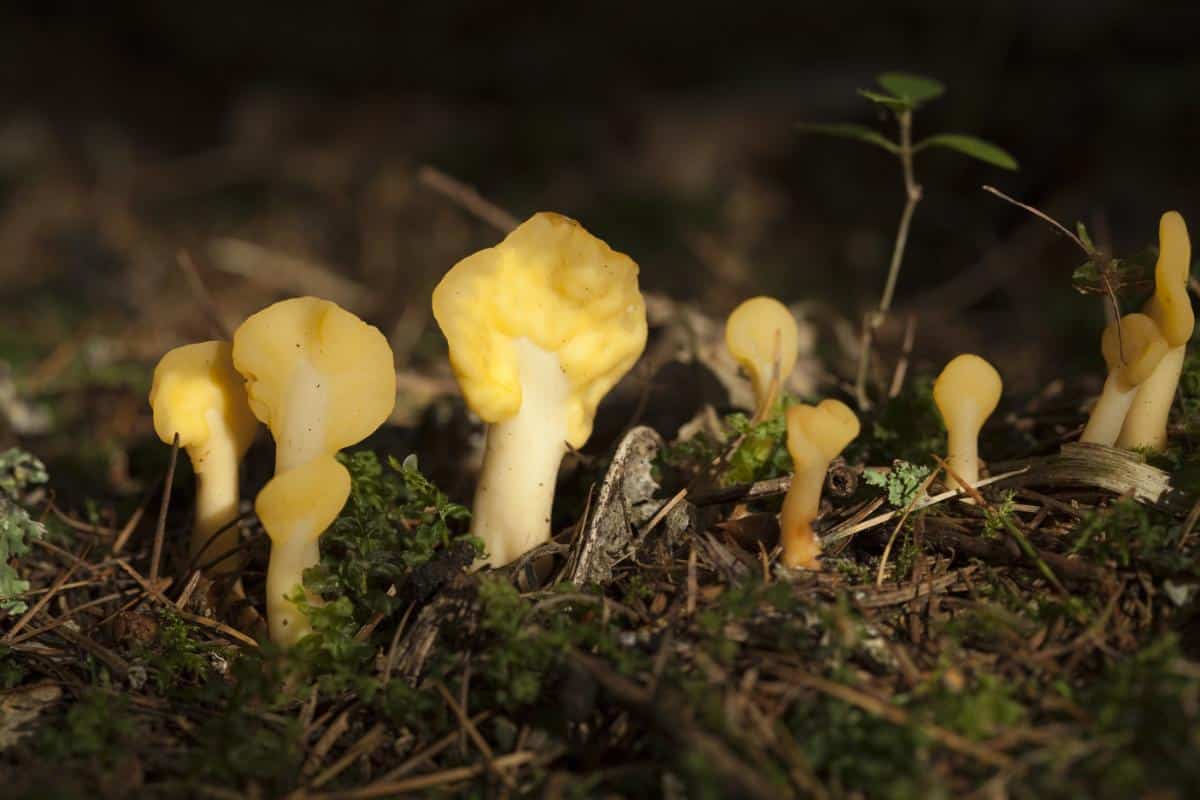
Identification
The yellow earth tongue’s most distinct feature is its spatula or fan-shaped fruiting body. The flattened, two-dimensional cap wraps around the top of the stem like a cup. This head section extends down both sides of the stem, creating a unique, spatulate, or sword-like shape. Young, fresh yellow earth tongues have a smooth, slightly wrinkled, and moist cap. There is a clear line that marks where the head meets the stem.
These mushrooms are between 0.8-3.1 inches tall. Their color ranges from a light, pale yellow to a rich yellow. The yellow often darkens as the mushroom ages. The stem’s color is nowhere near as dark as the cap – it is usually whitish, cream, or very light yellow. This is most clear when the mushroom is young. With age, the stem and cap may be the same color.
Stems of these mushrooms are hollow. The base of the stem often has white to light yellow mycelium attached to it when you pull the mushroom up. This differs from other similar species and is an important point to note.
Smell and Taste
The mushroom’s smell and taste are not distinctive.
Flesh and Staining
The flesh of the yellow earth tongue is thin, whitish, and feels somewhat rubbery. The mushroom doesn’t show color changes from bruising or cutting. The flesh does turn yellowish-brown after drying, though.
Spore print
The spore print is white to very pale buff.
Key Identification Points
- Light yellow to medium yellow cap.
- Smooth, yellowish stem
- Spoon shaped
- Stem is lighter in color than the cap
- White to yellowish mycelium at the stem base
Yellow Earth Tongue Variations
In North America, there is some variation in yellow earth tongue species, although it is mostly at a molecular level. These (for now…) aren’t separate species, but instead variations of Spathulariopsis flavida. For the average forager, these differences won’t be noticeable. But if you are interested in microscopy, these are fun to take a closer look at.
- S. flavida var. flavida
- S. flavida var. tortuosa
- S. flavida var. ramosa
- S. flavida var. brevispora
- S. flavida var. longispora
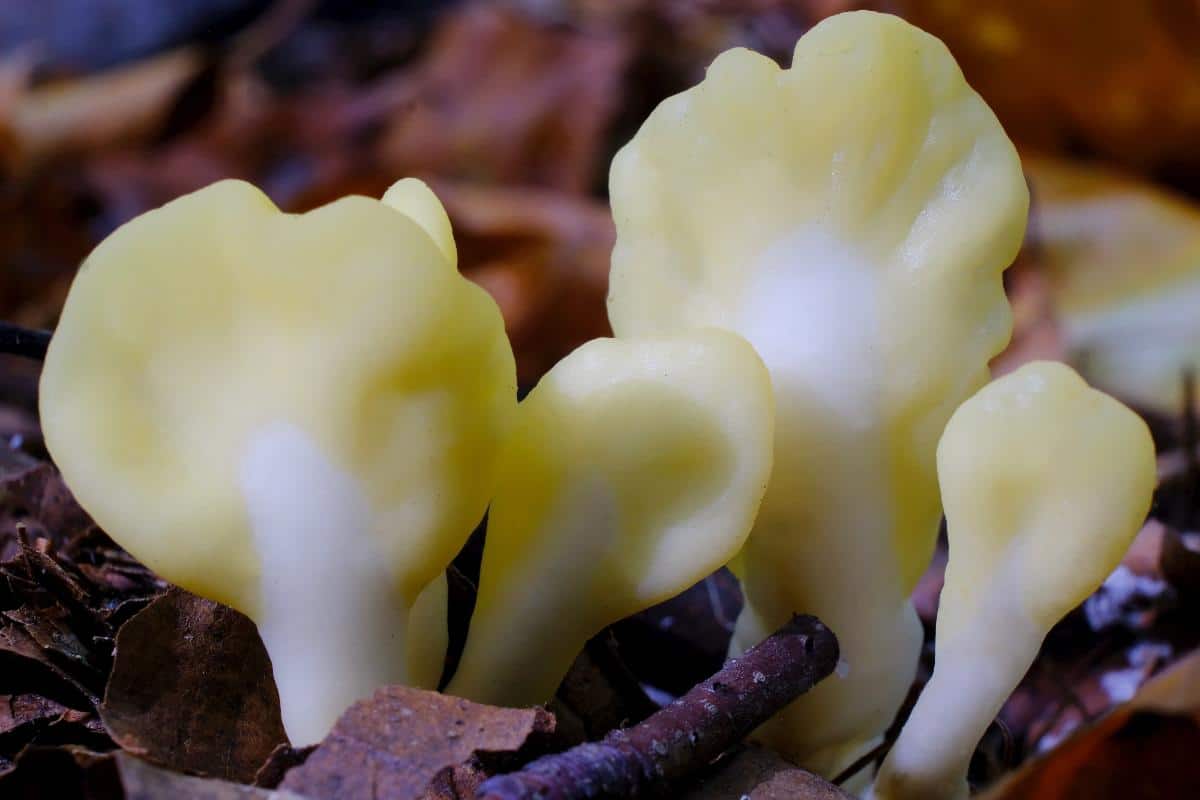
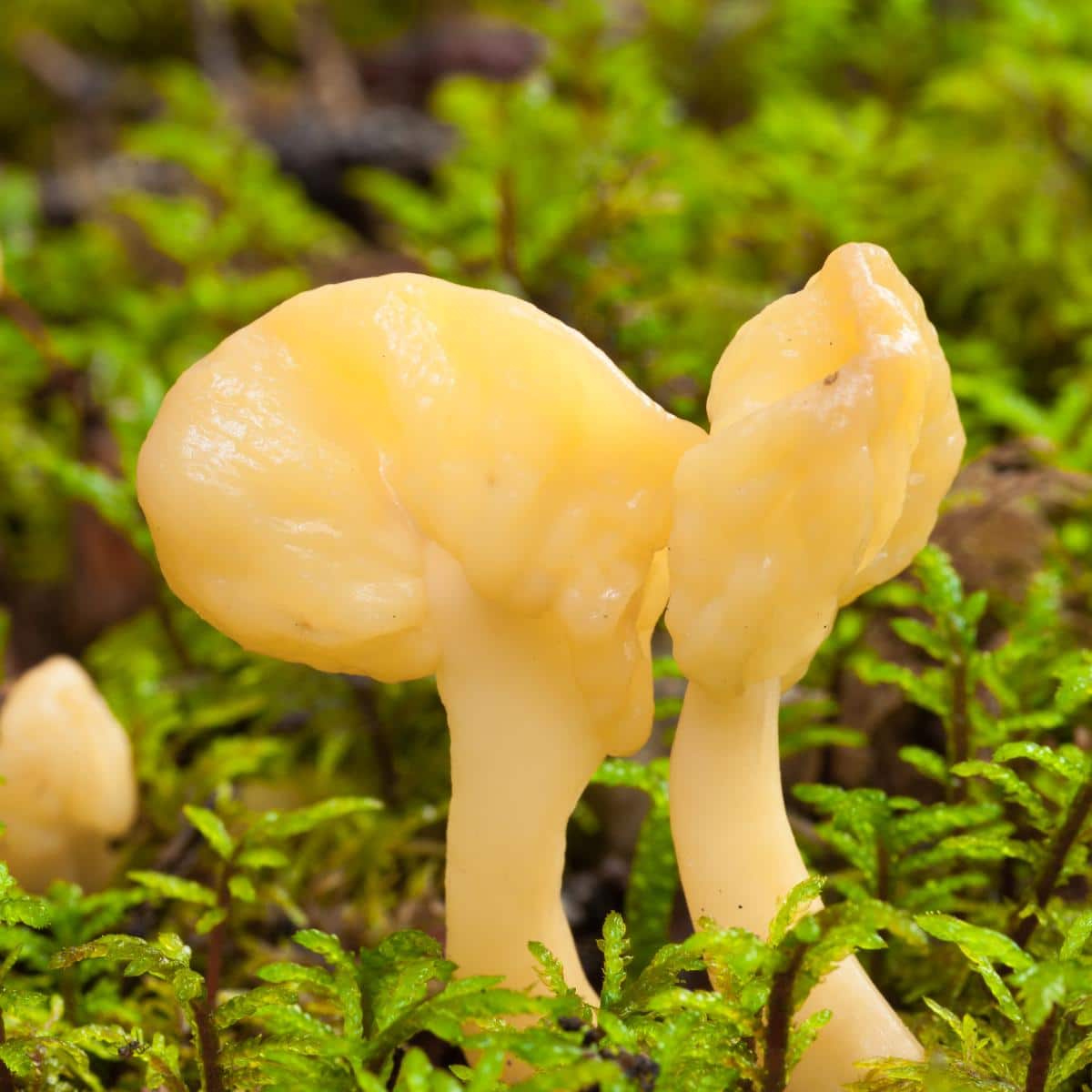
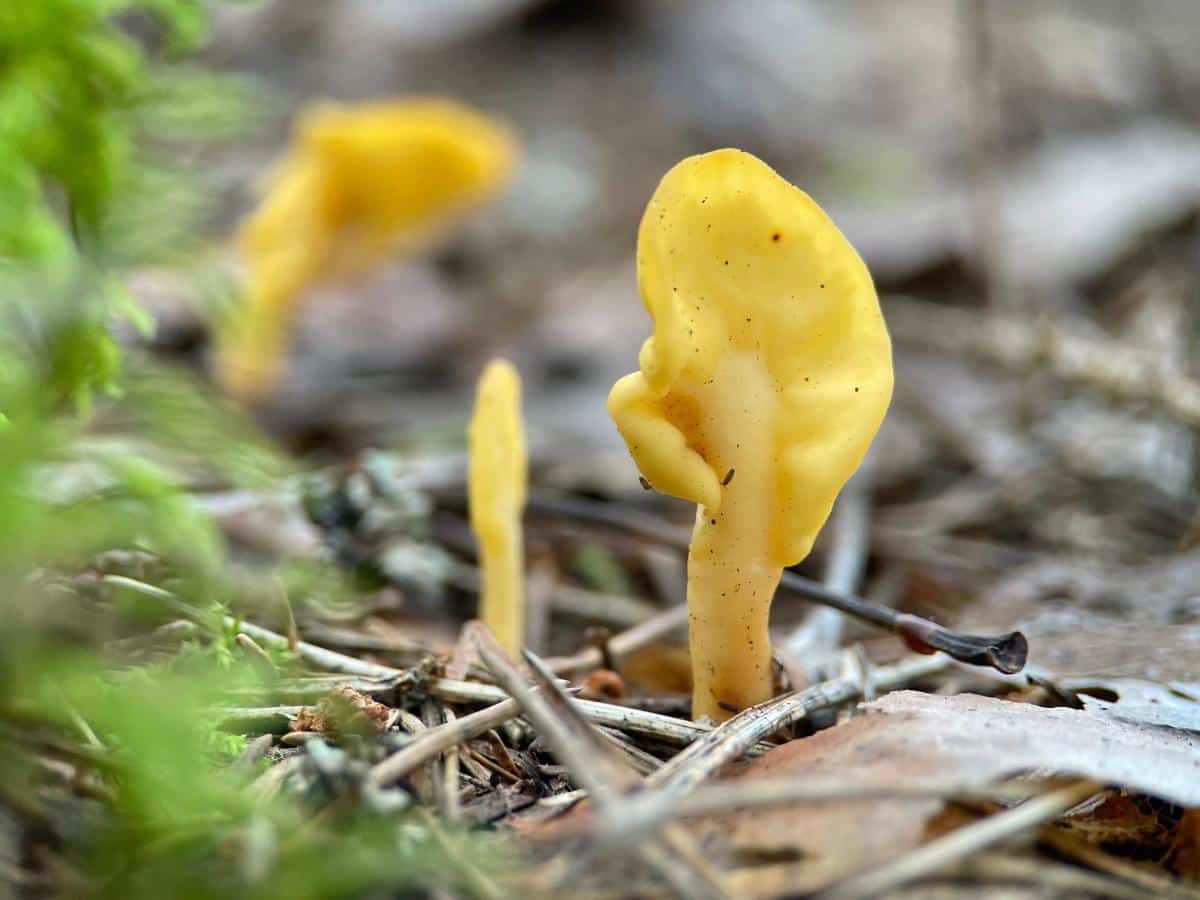
Yellow Earth Tongue Mushroom Lookalikes
Velvet Foot Fairy Fan (Spathulariopsis velutipes)
The velvet-foot fairy fan looks the most like the yellow earth tongue; they are related after all. Both have a spatula-shaped fruiting body, but their stems look quite different. Spathulariopsis velutipes has a fuzzy, brown stem. This is quite different from the smooth, yellowish stem of the yellow earth tongue. On top of that, it has orange mycelium at the base of its stem, while the yellow earth tongue has white to yellow mycelium at its stem base.
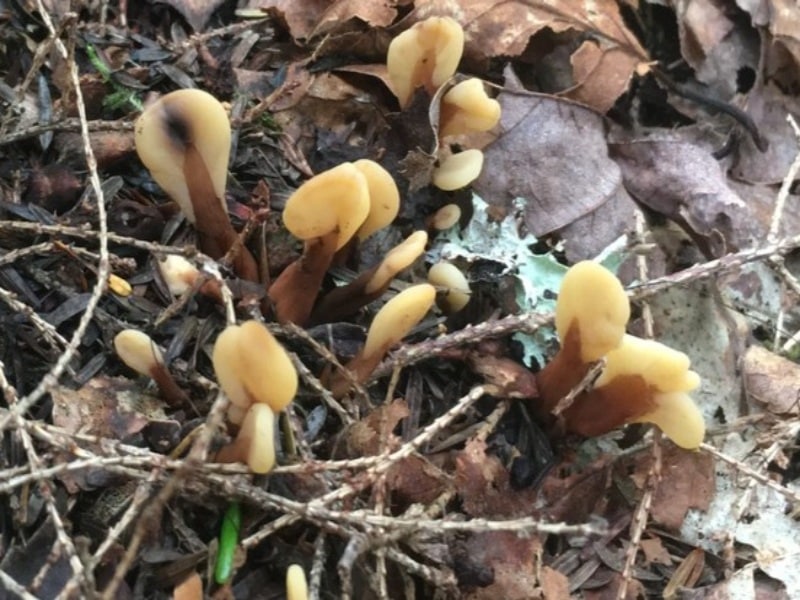
Irregular Earth Tongue (Neolecta irregularis)
This yellowish fungus looks somewhat like the yellow earth tongue, but it does not have a spoon-shaped head. Neolecta irregularis has a stem that is lighter in color than its head. Additionally, these mushrooms grow in irregular shapes and are bright orange to yellow-orange in color.
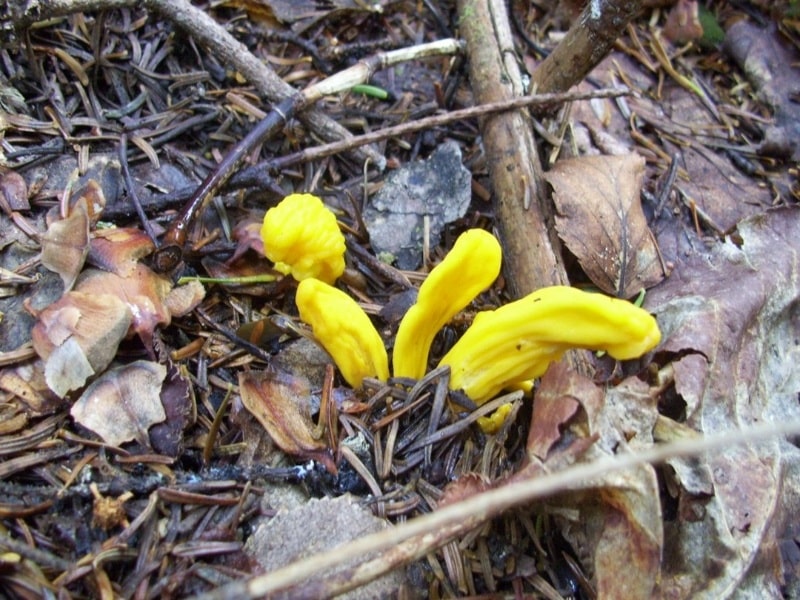
Orange Earth Tongue (Microglossum rufum)
The orange earth tongue is also tongue-shaped, but it is an orange-yellow to yellow tongue in color. M. rufum also has a scaly stem and a clear oval to spoon-shaped head.
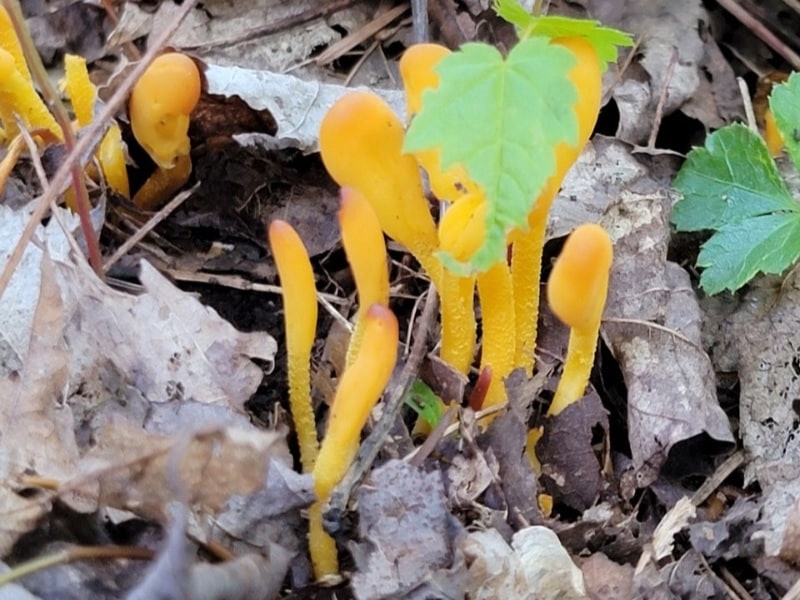
Yellow Earth Tongue Mushroom Edibility
The yellow earth tongue isn’t toxic or poisonous, but most people don’t eat it. It’s too small to be of much interest, and it has a bland taste. It can also be quite tough, due to its rubbery texture.
Some people who have tried this mushroom say it tastes good and has a soft, jelly-like texture. But these claims are minimal. Most people don’t bother with them.
Yellow Earth Tongue Medicinal Properties
Scientists haven’t done much (or any) research on the yellow earth tongue’s medicinal properties.
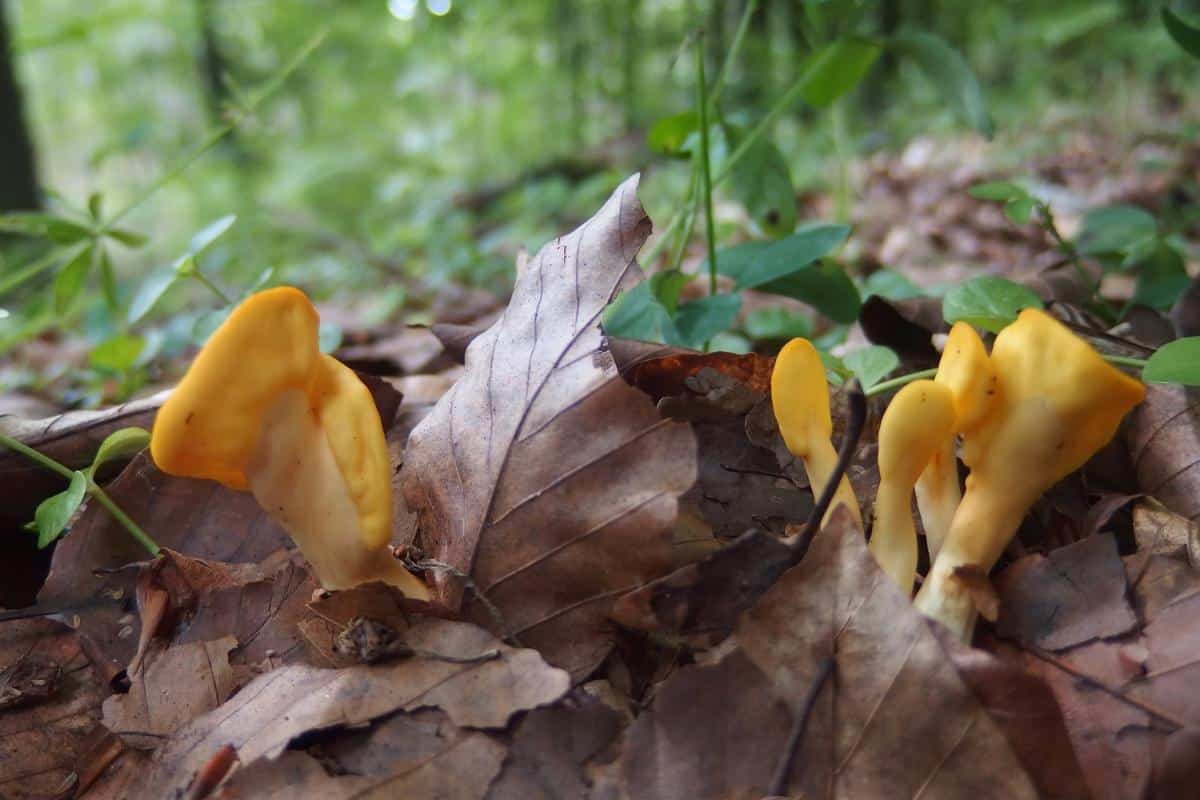
Common Questions About The Yellow Earth Tongue Mushroom
What is the Yellow Earth Tongue mushroom?
The Yellow Earth Tongue (Spathularia flavida) is an ascomycete fungus. It is pale yellow and shaped like a miniature spatula. It typically grows 2-5 inches tall, has a flattened head, and a whitish stem. It is most often found in coniferous forests.
Where and when can I find Yellow Earth Tongue mushrooms?
These mushrooms primarily grow in coniferous forests. They like to grow among needle duff or mossy ground. They’re found across North America, Europe, and parts of Asia, and fruit during summer and early fall.
Are Yellow Earth Tongue mushrooms edible?
Yellow Earth Tongue mushrooms are generally regarded as inedible or of poor culinary value due to their tough texture and lack of distinctive flavor. They are not poisonous, though; they are just not great to eat.

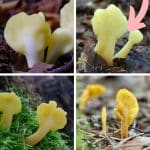
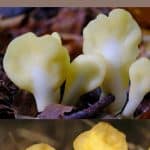
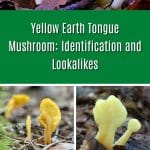
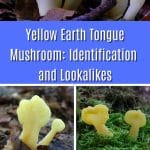
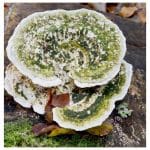
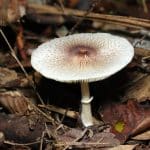
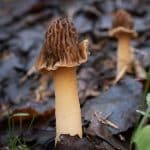
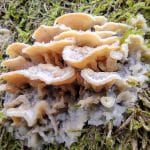
Leave a Reply